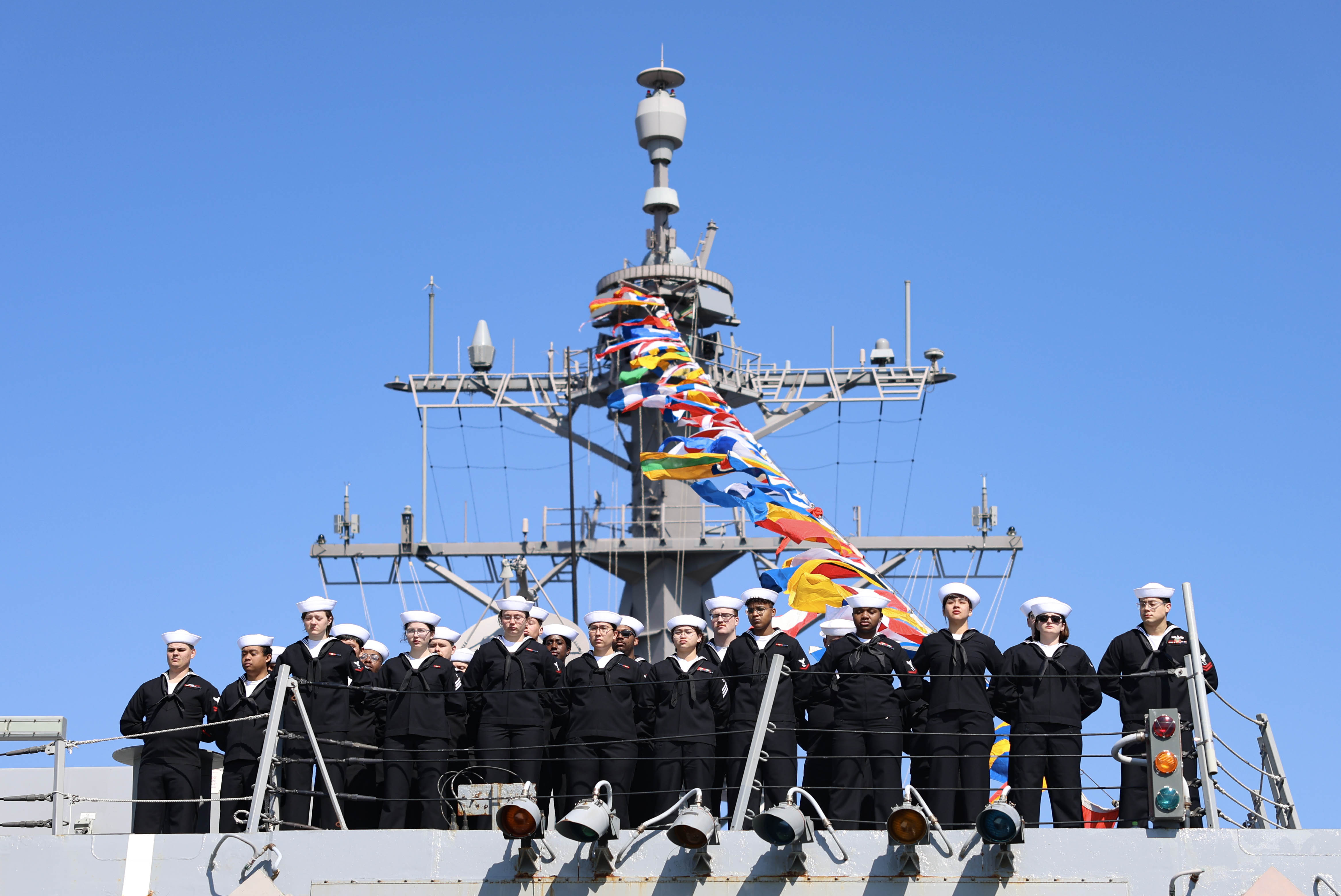
The Navy should “go back to the front end,” thinking about the people needed for building, crewing and maintaining vessels, not just potential threats, a senior naval analyst advised Thursday.
Speaking at the Woodrow Wilson Center, Ronald O’Rourke of the Congressional Research Service said “the Navy is facing challenges … in pretty much everything.”
In answering a question about uncrewed vessels in the fleet, he said by realizing “people are scarce,” the result will be “a Navy that looks different” from today’s, in which the emphasis has been placed on looking outward.
Jonathan Caverley of the Naval Warfare College said requirements such as ship maintenance are “not something you can just do from Arizona,” like piloting an unmanned aerial vehicle.
Both agreed that all the services are facing recruiting problems. In addition, key allies such as Japan and Australia and increasingly the United Kingdom are also having crewing problems in their navies.
O’Rourke noted the Navy’s Large Unmanned Surface Vessel [LUSV] program is “trying to mature the technology” before committing to specific designs. He said possible options could include partially manned systems as proposed by Hudson Institute, or adopting a “kit of parts” approach that organizes individual parts and material into standardized assembly.
“Upfront end-to-end design work” should lead to faster construction and “be generally right” about future requirements, O’Rourke said. He said more details were available in his remarks at the 2023 U.S. Naval Institute Defense Forum.
Caverley said “the political-economic process of building a ship is different from any other” Pentagon buy. “You really need a grand coalition in defense and related industries to build and maintain” Navy ships. “The timelines are much longer; [they are] much more expensive; and you will have [them] for a generation” to operate and maintain.
Saying “we’re pouring a lot of money into the submarine industrial base” and surface ship industrial base, O’Rourke commented he wasn’t sure whether reviving federal subsidies to rebuild the commercial shipbuilding sector would benefit the Navy in the long run.
Instead, it might set off a competition among public and private yards that build warships and private yards that would build commercial vessels and already build tugs, barges, supply vessels and oil rigs for skilled tradesmen.
That has been happening along the Gulf Coast already as work orders for Navy and Coast Guard ships have increased in the region. Workers had moved, as a matter of practice, from one yard to another for steady paychecks, O’Rourke said.
“Different skills are needed” to build and repair the two types of ships. Even overseas, shipbuilders in most cases separate the two work forces. China is an exception, but “but it doesn’t mean it’s an efficient model,” he added.
O’Rourke said shipyards in Japan, for example, doing naval work, have “a steady drumbeat” of construction, not the up-and-down, year-to-year approach path the United States follows. The Japanese approach allows it to increase the size of its fleet over time.”
Yet Caverley noted that like the United States, Japan and Korea are having major problems filling shipyard jobs. Both are using guest workers from countries as different as inland mountainous Nepal and Vietnam on the South China Sea to address that need.
O’Rourke said “maritime industries are not one of those ‘bright shining objects,’” like crypto or cyber that attract young people. He and Caverley added shipbuilding and repair remains heavily concentrated on the coasts. “There’s not of consciousness [in the American public] of us being an island nation,” said O’Rourke.
To build construction capacity where needed, the Navy and defense industry need to look inland to firms that can provide more than parts needed for construction but not usually associated with maritime construction. Foreign shipbuilders have invested in American yards. Austal and Fincantieri are operating in the U.S. military shipbuilding market through U.S.-based affiliates.
Using smaller yards for smaller vessels is another option to expand building and repair capacity for a growing fleet.
On the workforce, O’Rourke said, “Sub welders are regarded as the long poles in the tent” in having to spend time and money to build those workers’ skills to a journeyman level. He said successfully recruiting more and younger workers is not going to immediately solve the skills problem as Navy orders grow. They will “have a long learning curve.” In addition, those younger workers “may not be a lifer” in the maritime trades, possibly leaving after they have reached proficiency.
The result could be a continuing green labor force requiring constant training and slow production.
Increased pay for yard workers and improved quality-of-life benefits, such as better housing in coastal areas, are needed, but are not guarantees that those craftsmen will stay. O’Rourke added that the personnel costs in building a Navy ship is put at 40 percent of its building price.
Higher wages and improved benefits will cause shipbuilding costs to rise.





